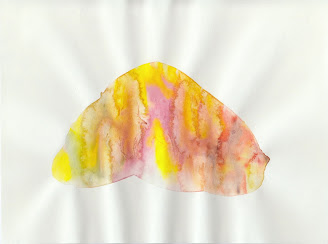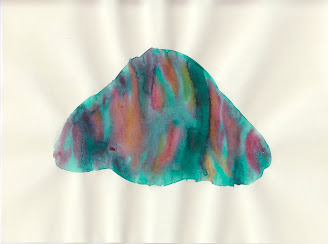My current series is about tracing the body in textiles and moving it into a kind of transcendental abstraction from physical reality. The starting point is the costumes of the medieval holy images and the transformed stuffed blankets that my dogs put down. I continued this series in a larger format and used different materials, for example, watercolor on paper or acrylic on canvas. I'm interested in different materials, formats, how to get different layers, and how reflections work together. The starting point is often a photo that documents the task of the human or animal body. The end result is almost always completely different from the starting point, it is not my goal to perfectly reconstruct the photo, I make another impression that further abstracts. Within a picture, instead of removing the material and looking inward, I am often concerned with a shape that is not always material-like and often reminiscent of an organic shape, a body part, or an internal organ.
An important part of the process is the specific behavior of the watercolor, its independent lifespan when it reacts with the paper. Thus there is always a random, uncontrollable period, the outcome of which is always exciting.
The details of the medieval altarpieces have always fascinated me, especially the special version by Stefano di Giovanni (Sassetta), Fra Angelico, and Giotto in the depiction of the robes of the saints.
Body masses covered by folds of clothing arranged in compositions, often completely ignoring perspective. The abstraction of the folds lets the viewer wander meditatively. The cover always has a secret that makes things interesting. On the other hand, if we look at the material that has been examined for the trace of the body, we get a void, a negative form that can no longer be deciphered. I'm trying to reconstruct this type of defect, do archaeological research, and capture the beauty of the missing shape.











